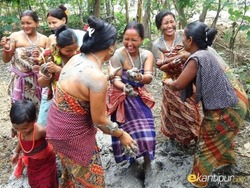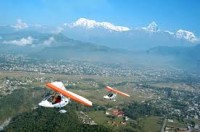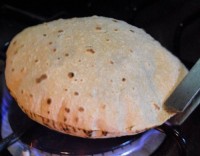Tajpuria community in Nepal
An indigenous group found mainly in the districts of Jhapa and Morang, Tajpurias are different than Rajbansis although their culture and language are more or less similar. This community has their own religion and in all of their religious rituals, alcohol is a must. Although they are engaged in artistic craftsmanship that is different from the Rajbansis, their major occupation is farming.
Tajpuria women do not pierce their nose or use ornaments like the Rajbansi women do and although both of these ethnic groups dress similarly, Tajpurias are expert at hand stitching. They are often considered by some to have come from Mongoloid community while others believe that they belong to the Austroasian group. Rajbansi are said have been influenced by Tajpurian civilization as the language used by the former is known as Tajpuriya Bhasa. Residing in the western part of Jhapa district and the eastern part of Morang district, Tajpurias, like Rajbansis, are believed to have come to Nepal from Kuch Bihar and are also considered as the first inhabitants or indigenous people of the area.
The language of Tajpurias is the type in which Bangla is mixed with Assamese. The worshipper of nature, Tajpurians, however, also observes the Hindu festival without using Brahmin priest. There are various procedures to be followed and completed by the mid-wives or baby-sitters during childbirth and the marriage ceremony of Tajpurians have five approaches similar to that of Rajbansis. The dead body is buried and only after that is the funeral said to be completed.
The dress worn by the Tajpurian women is known as petani which is a knee long dress put around the waist similar to that of Rajbansi women. The major festival of this community is Siruwa Parwa along with the other Hindu festivals and occasion. Women in Tajpurian society are highly respected, unlike in most of the communities residing in Nepal where they face discriminations. The people of the community own land and practice farming as their major occupation, however, the Tajpurian men are also skilled in masonry while the women are highly skilled in weaving clothes on looms.







